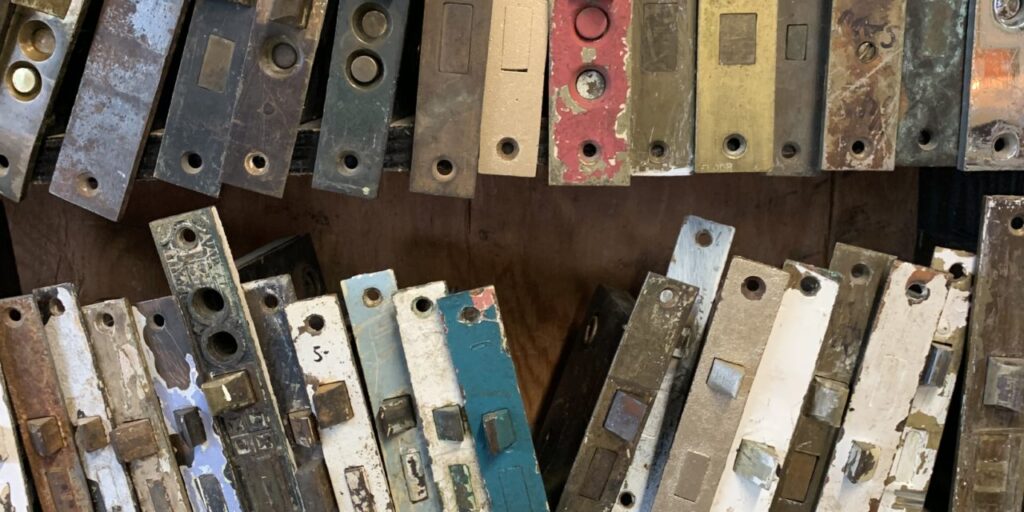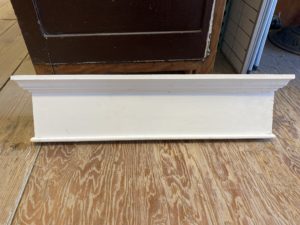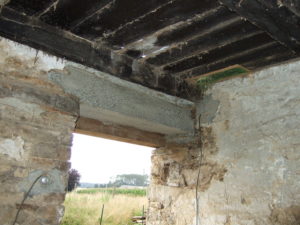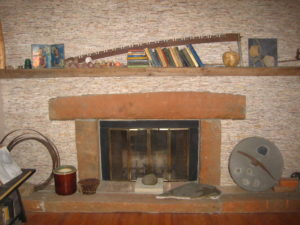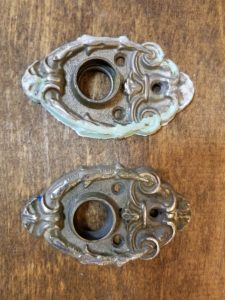Every day, Earthwise employees are tasked with figuring out what the customer’s needs are. Most of the time, people know exactly what they want. Other times, it’s a bit of a learning curve.
Here are some of the most common tips to keep in mind when shopping in the salvage industry:
1. WHEN TO USE THE WORD “PATINA”
There are many ways people use the word “patina”. In the past decade or two, the aged, antiqued look of materials became quite popular. The word patina peaked in popularity in 2003 when many DIY’ers made their new furniture weathered-looking with paint and sanding techniques.
However, patina in the salvage industry means something a little different.
Nate, our Seattle store manager, describes patina,
“We specifically use the word patina to describe the green or brown color produced by oxidation on the surface of copper, bronze or similar metals. You’ll often see a nice patina on vintage outdoor lighting fixtures.”
Patina isn’t the same as rust, as rust is created from oxygen and moisture on the surface of iron or alloys that contain iron.
When you think of a green patina, think of the Statue of Liberty:

Statue of Liberty
Outside of metals, patina can also describe the glossy look that occurs once something has been polished or aged over time.
Here’s an interesting article about the difference between Patina, Rust and Tarnish.
2. SPEAKING OF METAL, GRAB A MAGNET!
When shopping in our hardware section, it can be a huge puzzle figuring out what type of metals hardware is made of. There is a great spectrum of finishes and plating that goes onto hardware, especially depending on the era. But what lies underneath?
An easy way to narrow down metals is to grab a magnet. Steel and iron have magnetic properties, while copper, bronze, and brass would not be magnetic.
3. CORNICE VS LINTEL
Do you know the difference between a cornice and lintel? Upon first glance, they seem fairly similar. However, there are some major differences between the two.
A cornice is a decorative moulding around the top edges of buildings or interior walls. They are meant to bring a finished look to your space. Modern cornices are made from timber, fiberboard, or plaster and other lighter materials. The most important distinction is that the cornice is not load bearing.
A lintel is a solid beam that is placed across openings in a home (doors, windows, etc.) and is used as a load bearing structure. The lintel beam equals the width of the wall, and the ends of the lintel are built into the wall itself. A lintel may go straight across the door or window, or be an arched shape.
4. IS THERE SUCH A THING AS A “STANDARD SIZE” DOOR?
Many people believe there is a standard door size. And we get it – there should be! While it’s common in new construction for doors to be one of a couple sizes (mainly 36” wide for exterior doors) there isn’t official standardization. If you look through our inventory, you’ll see quite the variety of widths to choose from—especially when it comes to older, solid wood doors.
Kyarsten, our Tacoma Store Manager, continues,
“If we are talking about older homes, there is often no building code when the home was built. This sometimes lead to very narrow or short doors. Frequently, doors were made to match the house. Bigger houses meant bigger doors.”
The most important measurements for a door are width and height. Some other measurements include: striker height (where your door handle is), hinge spacings, and door thickness. Doors from older homes can also be extra thick, so it is good to keep in mind all measurements possible when looking at antique doors.
5. HOW DO YOU PRONOUNCE THAT, EXACTLY?
We sell many amazing items at Earthwise, but pronouncing said items is a different story! Here are two most commonly mispronounced items:
Mortise is pronounced “MOR-TIS”
Lined up along walls or shelves, you’ll see many mortise locks, which is a lock that is set inside the body of the door versus one that is only attached to the surface.
Escutcheon is pronounced “ES-CUTCH-UN”
What are all of those ornate items behind the case? Often, it’s an escutcheon, a piece of metal that is around door handles, light switches, keyholes and more.
6. BOARD FOOT VS LINEAR FOOT
Board foot is not a common measurement for most people as it’s used most often with large lumber quantities. When you’re at a hardware store, you will see prices based on linear feet, which is a measurement of length. While shopping at Earthwise, it can be confusing to see “board foot” being used to describe a price.
However, in the salvage world, a board foot is a measurement of volume instead.
Because of the types and conditions of lumber we sell, along with customized milling that creates unique sizes, it’s all around challenging to have a linear foot price. We use board feet to calculate the total volume we are selling of a piece. This helps our wood types be consistent in pricing even with large size variables.
The formula for a board foot is: Width x Length x Thickness in inches divided by 144. From that number, you can multiply by the price per board foot.
Have more questions? Feel free to contact any one of our locations and our qualified staff can help get you the answers. Happy salvage hunting!

